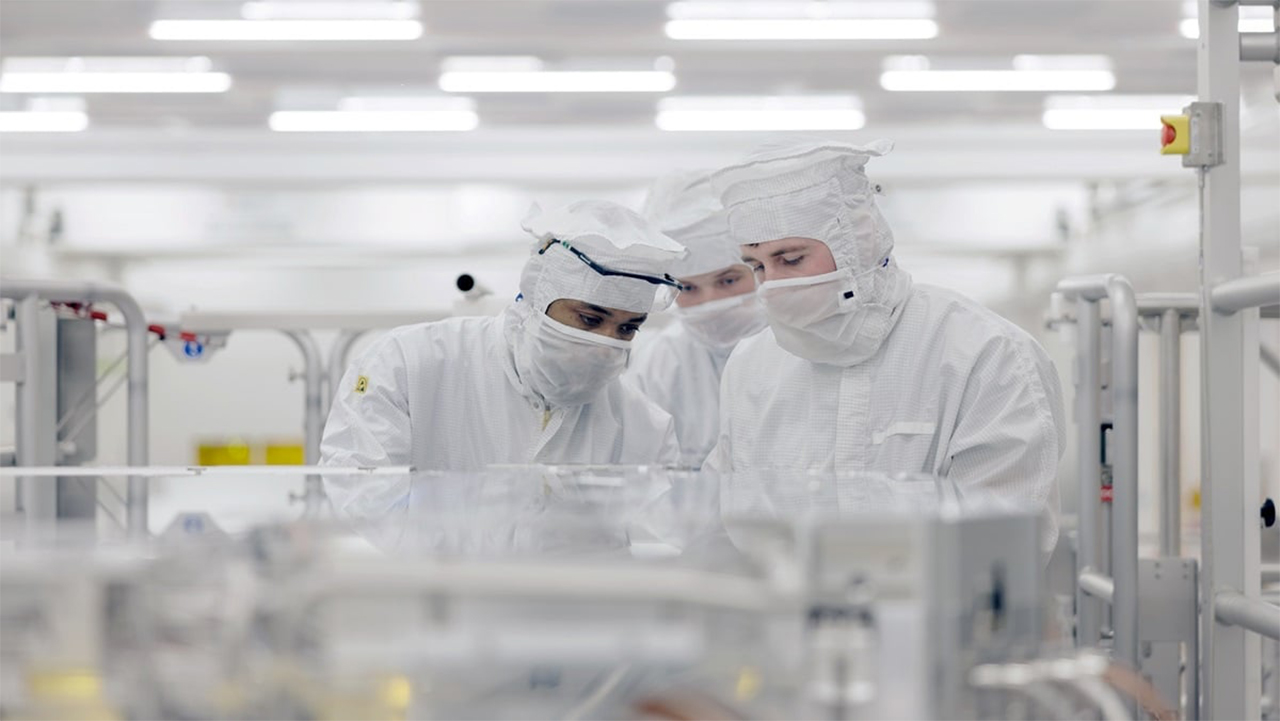
ASML has announced that its first extreme ultraviolet (EUV) lithography tool with projection optics featuring a 0.55 numerical aperture (High-NA) has printed its first patterns. The announcement is a major milestone for both ASML and for High-NA EUV lithography technology in general.
"Our High-NA EUV system in Veldhoven printed the first-ever 10 nanometer dense lines," a statement by ASML reads. "Imaging was done after optics, sensors and stages completed coarse calibration. Next up: bringing the system to full performance. And achieving the same results in the field."
There are currently two High-NA EUV litho systems in the world: one is being built by ASML in Veldhoven, Netherlands — where ASML is headquartered and where the company has a joint High-NA lab with Imec, a leading semiconductor research institute in Belgium; another is being assembled at Intel's D1X fab near Hillsboro, Oregon.
ASML seems to be the first company to announce successful patterning using a High-NA EUV lithography system, which is a major milestone for the entire semiconductor industry. ASML will only use its Twinscan EXE:5000 for its own development and for refining its own technology.
By contrast, Intel will use its Twinscan EXE:5000 to learn how to use High-NA EUV lithography for mass producing chips. Intel will adopt this tool for R&D purposes with its Intel 18A (1.8nm-class) process technology, and plans to deploy the next-generation Twinscan EXE:5200 scanners to make chips on its 14A (1.4nm-class) production node.
ASML's Twinscan EXE:5200, which is equipped with a 0.55 NA lens, is designed to print chips with an 8nm resolution — a significant improvement over the current 13nm resolution of EUV tools. This technology allows for printing transistors that are 1.7 times smaller and achieve 2.9 times higher transistor densities with a single exposure, versus Low-NA tools.
Although Low-NA systems can match this resolution, they have to use a costly double-patterning technique. Achieving 8nm is critical for manufacturing sub-3nm process chips, which are set to arrive in 2025–2026. The introduction of High-NA EUV technology is set to eliminate the need for EUV double patterning — thereby streamlining production processes, potentially enhancing yields, and cutting costs. However, High-NA tools cost up to $400 million each and introduce numerous challenges, which have complicated the transition to leading-edge process technologies (set to happen in the second half of the decade).







